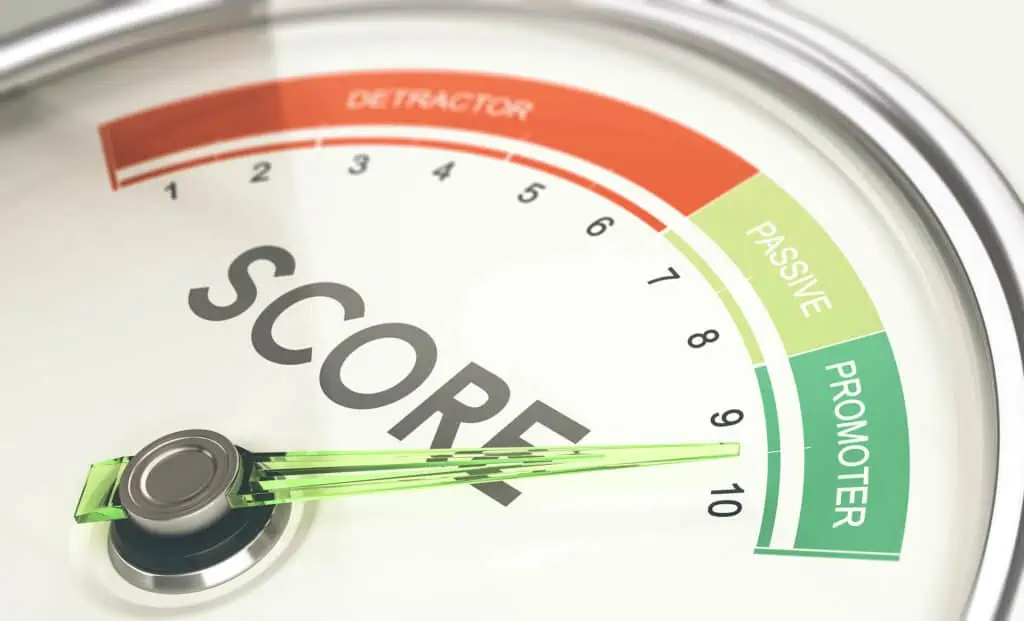Net Promoter Score (NPS) is a popular metric used by businesses worldwide to gauge customer satisfaction, loyalty, and the likelihood of recommendations. A strong NPS indicates that your customers are not only pleased with your product or service but are also enthusiastic advocates for your brand. In this blog post, we’ll walk you through 10 proven strategies to improve your NPS score, bolster customer satisfaction, and drive brand advocacy.
Understanding Net Promoter Score (NPS)
NPS was introduced by Fred Reichheld in 2003 to measure how likely your customers are to recommend your business to a friend or colleague. The score is derived from a single question:
“How likely is it that you would recommend our product/service/company to a friend or colleague?”
Customers respond on a scale from 0 (not at all likely) to 10 (extremely likely). NPS classifies respondents into three main categories:
- Promoters (9-10): Loyal customers who will gladly recommend your brand.
- Passives (7-8): Generally satisfied but not enthusiastic enough to actively promote your brand.
- Detractors (0-6): Unhappy customers who can damage your brand through negative word-of-mouth.
Why NPS Matters
A high NPS means a high proportion of delighted customers, which can lead to:
- Increased Word-of-Mouth Referrals: Happy customers refer new business at a significantly higher rate.
- Higher Customer Lifetime Value (CLV): Loyal customers spend more over time and are less likely to switch to competitors.
- Greater Brand Advocacy: Promoters will champion your brand on social media and review sites, boosting your credibility.
How to Calculate NPS
- Subtract the percentage of Detractors from the percentage of Promoters.
- NPS scores range from -100 to +100. The higher, the better.
Example Calculation:
- Suppose 60% of respondents are Promoters, 20% are Passives, and 20% are Detractors.
- NPS = 60% – 20% = 40
“Do what you do so well that they will want to see it again and bring their friends.”– Walt Disney
Strategies To Improve Your NPS Score
1. Focus on Customer Experience
Delivering exceptional customer experiences should be at the core of your business strategy. Map out every touchpoint of the customer journey and identify where friction occurs. Use surveys, user behavior analysis, and direct feedback to target areas needing improvement. Enhanced experiences often translate directly into higher NPS.
2. Streamline Onboarding and Training
A smooth onboarding process sets the tone for the overall customer relationship. Provide clear instructions, user-friendly materials, and personalized walkthroughs. When customers feel equipped and empowered to use your product or service from the start, they are far likelier to become Promoters.
3. Encourage Customer Feedback
Make it easy for customers to share both positive and negative feedback. Provide multiple channels—emails, social media, in-app prompts, or website forms—to ensure accessibility and convenience. The more feedback you receive, the better you can fine-tune your offerings and enhance the customer experience.
4. Act on Feedback Promptly
Respond swiftly and sincerely when you receive customer feedback, especially from Detractors. Whether it’s a technical glitch, shipping delay, or subpar service experience, demonstrate your commitment to finding a quick and satisfactory solution. Timely intervention can turn Detractors into Passives or even Promoters.
5. Personalize Your Communication
Use customer data to personalize your messaging and offers. Address customers by name, tailor product recommendations to their preferences, and acknowledge their past interactions with your brand. Personalized communication boosts customer satisfaction and fosters a deeper sense of brand loyalty.
6. Foster a Customer-Centric Culture
A stellar customer experience starts internally. Encourage your teams to adopt a customer-first mindset by providing regular training and performance metrics highlighting customer satisfaction. Recognize and reward employees who go above and beyond to deliver exceptional service. A customer-centric culture naturally translates into higher NPS.
7. Implement a Loyalty Program
Offering rewards, discounts, or referral incentives can significantly influence your NPS. Loyalty programs motivate satisfied customers to continue engaging with your brand and encourage them to spread the word. Be sure your rewards are relevant, valuable, and easy to redeem for maximum impact.
8. Optimize Your Channels of Communication
Ensure your customers can reach you via their preferred methods. Whether through email, phone, live chat, or social media, maintain a consistent tone and level of service. Quick, efficient, and friendly communication fosters trust and boosts the likelihood of an improved NPS.
9. Analyze Competitor Benchmarks
Gain insights by comparing your NPS with industry competitors. Benchmarking can highlight potential areas of improvement and opportunities for differentiation. By understanding what competitors are doing well—and where they fall short—you can craft strategies that set your brand apart and draw in dissatisfied customers.
10. Track Progress and Reassess Strategies
An NPS improvement plan should be a continuous endeavor. Track your score over time, study patterns, and reassess your strategies to stay aligned with evolving customer needs. Consistently monitor feedback, dig into customer satisfaction metrics, and refine your processes to maintain a healthy NPS.
Tools to Monitor and Automate Your NPS
To optimize your NPS initiatives, it’s crucial to use the right tools. These platforms can help you gather, analyze, and act on feedback more effectively—often with a high degree of automation, so you can spend more time on strategy and less on manual tasks.
- Survey Tools: Platforms like SurveyMonkey, Typeform, and Qualtrics offer customizable NPS survey templates and automated triggers. You can send out surveys at specific customer journey milestones (e.g., after a purchase or onboarding session), and the tool will collect and analyze the data for you.
- NPS-Specific Solutions: Tools such as Delighted and AskNicely specialize in automating the entire NPS cycle. These solutions make it easy to set up recurring surveys, segment audiences, and track trends over time through comprehensive dashboards.
- CRM Integrations: Many Customer Relationship Management (CRM) platforms (e.g., Salesforce, HubSpot) allow you to integrate NPS surveys directly. This helps you automate sending out surveys at the right stages, record responses under each contact, and trigger follow-ups for Detractors or Promoters.
- Automation Features: Look for features like automated follow-ups, instant notifications for low scores, and scheduled reporting. These ensure you never miss important feedback and can respond promptly to concerns—leading to quicker issue resolution and potentially flipping Detractors into Promoters.
By investing in the right tools and automating data collection, analysis, and response, you can maintain a steady feedback loop without overwhelming your team. This approach empowers you to make data-driven decisions, address customer concerns in real-time, and continually refine your strategies to boost your NPS.
Key Takeaways
- Consistent Feedback Loop: Continuously collect and act on feedback to foster customer trust.
- Personalized Service: Tailor your communication and offers to individual customer needs.
- Customer-Centric Culture: Empower your employees to prioritize customer satisfaction.
- Data-Driven Improvements: Use analytics and competitor benchmarks to drive informed decision-making.
- Frequent Reassessment: Regularly measure NPS and adjust your approach as your business evolves.
Conclusion
Improving your NPS is an ongoing process that demands dedication, empathy, and strategy. By implementing the 10 proven strategies above, you can cultivate a loyal customer base that not only keeps coming back but also actively promotes your brand. Remember, every interaction—no matter how small—can either elevate or diminish your NPS. Stay focused, agile, and committed to delighting your customers at every turn.





